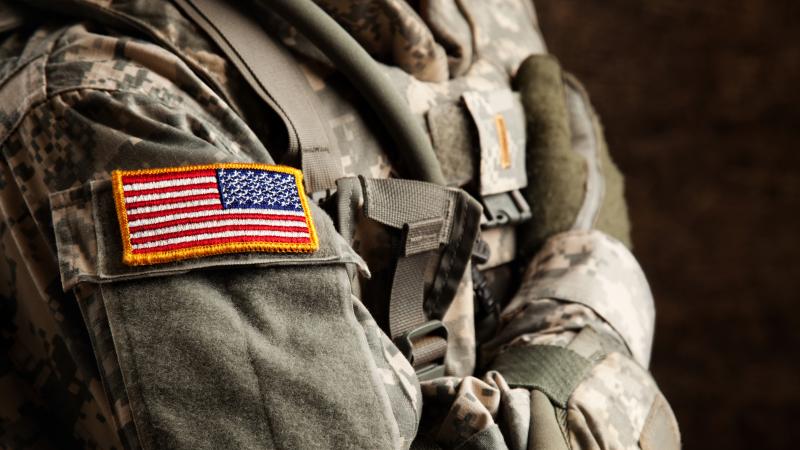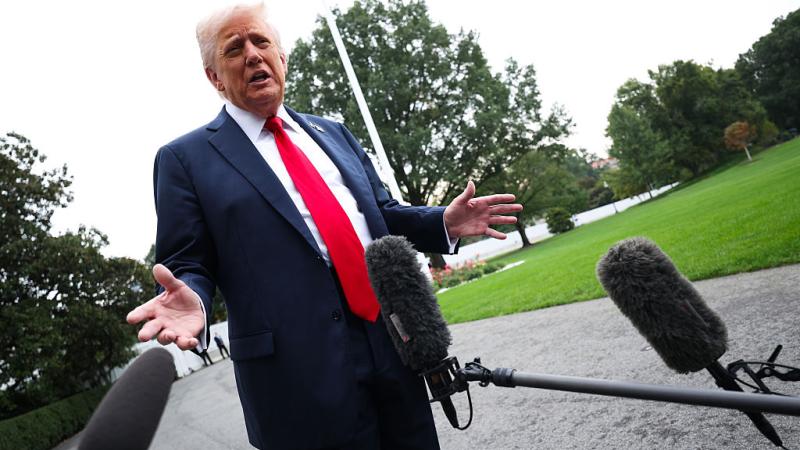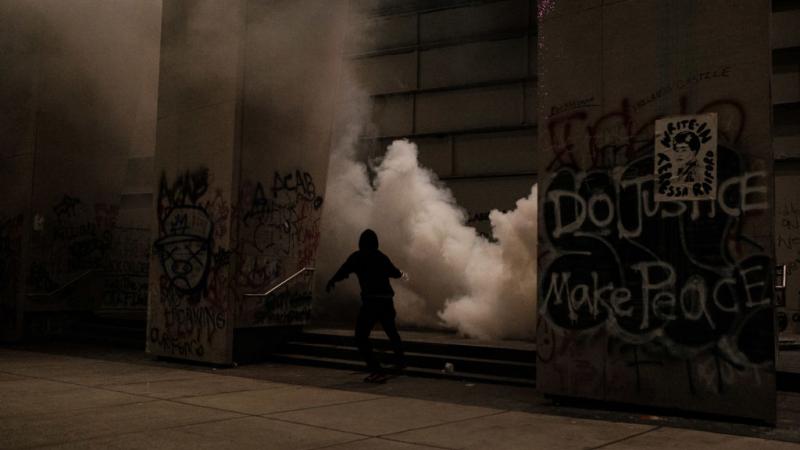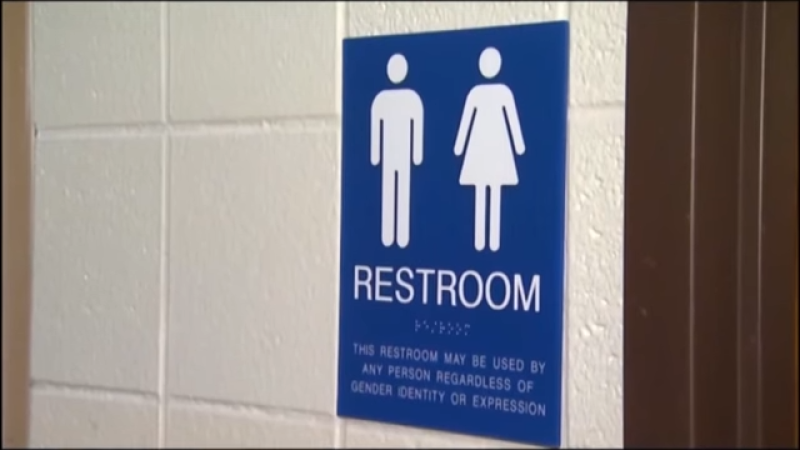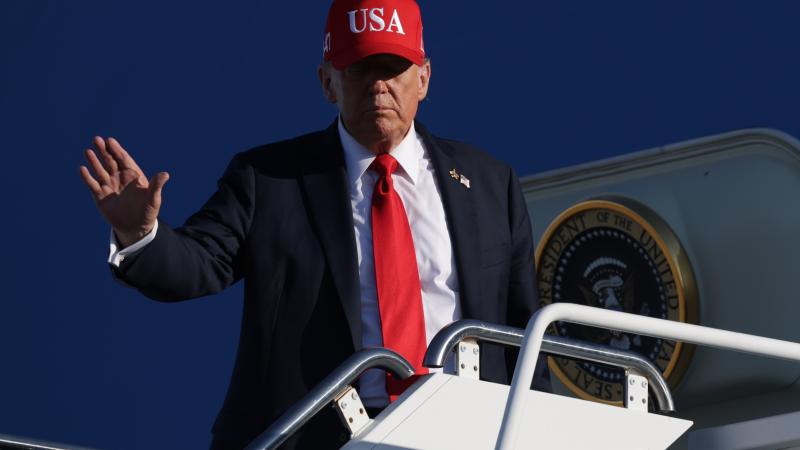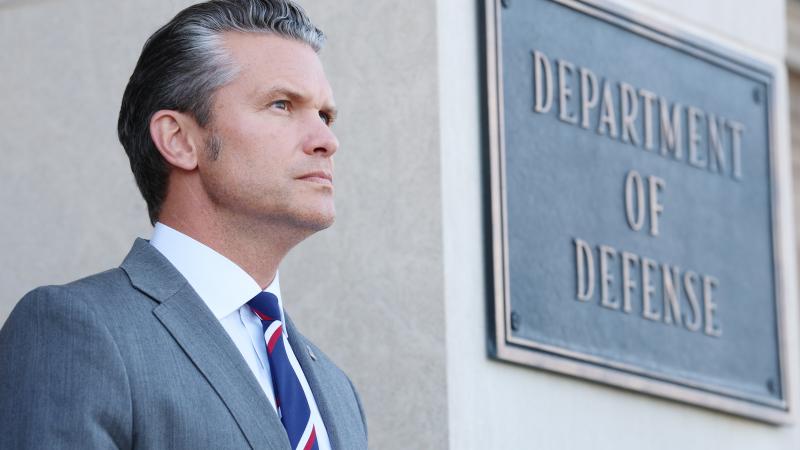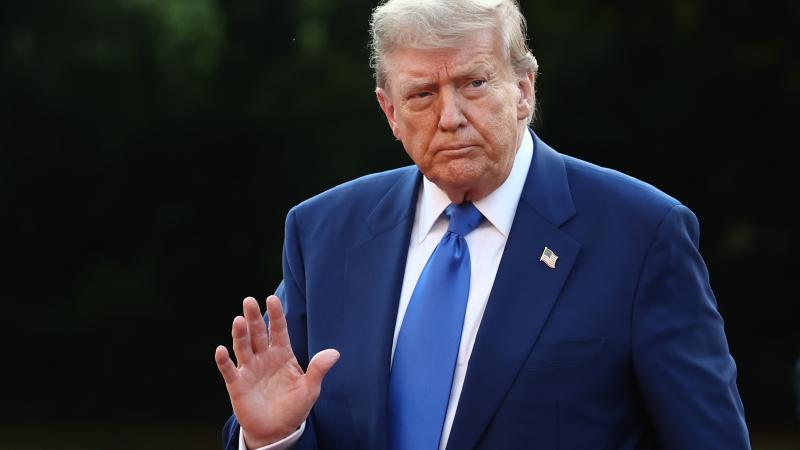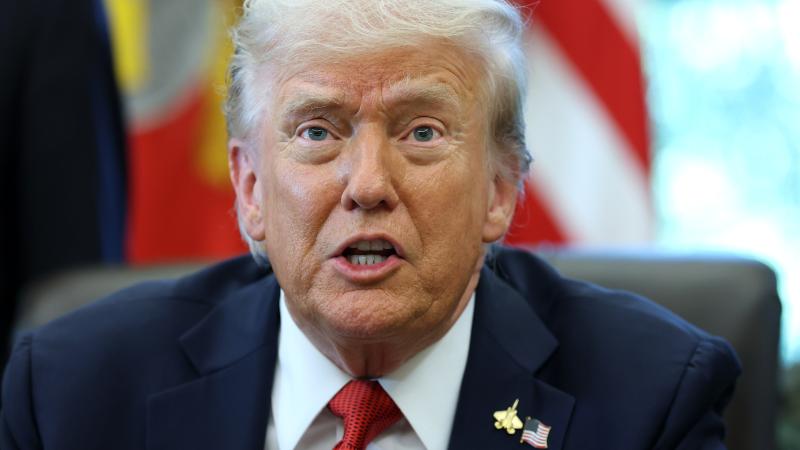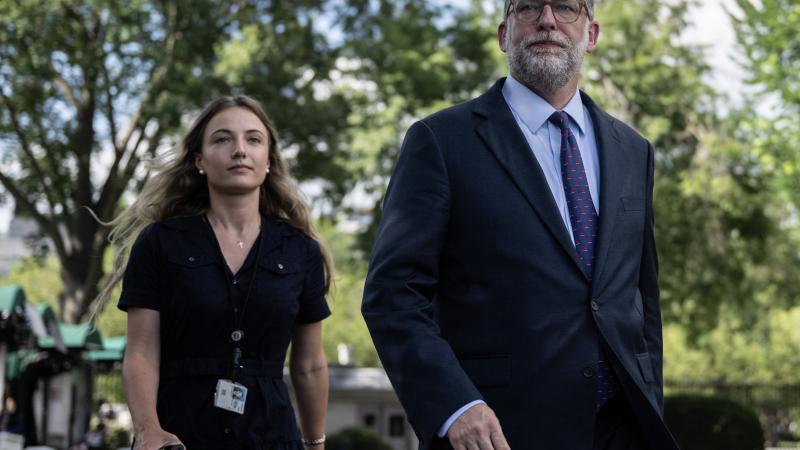As Hegseth presses to hold military accountable for Afghan debacle, a top general comes into focus
On the fourth anniversary of the Abbey Gate terrorist attack in Kabul, the world is seeing the first signs that answers and accountability may be coming.
On the anniversary of the deadly bombing at Abbey Gate that killed 13 U.S. troops, Defense Secretary Pete Hegseth and his team are working quickly to accomplish what Congress did not: holding top military generals accountable for their specific failures during the catastrophically bungled withdrawal of U.S. forces from Afghanistan four years ago.
“On behalf of this beautiful group, on behalf of these families, on behalf of your loved ones who fought for our nation, America deserves answers as far as what happened in Afghanistan. The military needs to answer for what happened in Afghanistan,” Hegseth told those soldiers' families gathered by President Donald Trump in the Oval Office on Monday.
Hegseth's exercise is likely poised to delve into the decisions and miscalculations of then-Chairman of the Joint Chiefs of Staff Mark Milley, who promised Afghanistan would not end like Saigon but whose assurances on the strength of Afghanistan's own forces and their ability to hold the country from an advancing Taliban proved faulty.
First, though, a word about this author. I co-authored a book — KABUL — on the withdrawal and evacuation from Afghanistan, and prior to joining Just the News, worked as the senior investigator on the House Foreign Affairs Committee (HFAC), specifically tasked with reviewing the bungled Afghan withdrawal.
I quit the committee in protest last August over disagreements with then-GOP Chairman Michael McCaul over how the investigation was run and what was edited out of the drafts I wrote before the final report titled “Willful Blindness: An Assessment of the Biden-Harris Administration's Withdrawal from Afghanistan and the Chaos that Followed” was published last September.
This story is not an effort to rehash those disputes.
In full disclosure, I have also been serving as an independent factfinder in Hegseth's ongoing review, but I am participating in that exercise solely as a journalist. I'm not paid by any government agency and my participation is solely to help provide Just the News readers and the American public a better understanding what led to such a disaster.
Just the News reached out to McCaul's office for comment, and his spokeswoman provided a statement defending the work of the committee and its findings while acknowledging there may be outstanding questions still to be answered.
"Chairman McCaul stands by his comprehensive report, the culmination of 18 transcribed interviews, seven public hearings, and 20,000 pages of documents obtained under subpoena from the State Department,” Emily Cassil, a spokesperson for McCaul, told Just the News.
"As he said upon releasing his report, 'there are still unanswered questions, and more information must be gathered.' However, as Mr. Dunleavy is well aware, any outstanding questions regarding current or former Department of Defense employees must be handled by the committees of jurisdiction — not the House Foreign Affairs Committee. We hope that this investigation continues until all questions are answered," she added.
Milley did not respond to requests for comment sent to him through Princeton University, where he was named a visiting professor last year, and through JPMorgan Chase, where he has been a senior adviser since 2024.
Milley and Biden claimed Afghanistan wouldn’t be "another Saigon"
Former President Joe Biden infamously said in July 2021 that Afghanistan was not going to end up like the U.S. retreat from Saigon. But it was Milley who appears to have first publicly advanced the narrative at a congressional hearing in 2021 that the Taliban were not the North Vietnamese Army and that Afghanistan was not going to end up like Vietnam.
“In my professional opinion, I do not see that unfolding. I may be wrong. Who knows? You can’t predict the future. But I don’t see Saigon 1975 in Afghanistan," he told an inquiring senator. "The Taliban are not the North Vietnamese Army. The Taliban just aren’t the North Vietnamese Army. It’s not a similar situation. It’s not that kind of situation."
As Biden's top military adviser, Milley likely provided this viewpoint to the president. Biden clearly echoed those sentiments when asked in summer 2021 whether there were comparisons between the U.S. withdrawal from Afghanistan and its retreat from Vietnam.
“None whatsoever. Zero,” Biden answered. “The Taliban is not the … North Vietnamese army. … There’s going to be no circumstance where you see people being lifted off the roof of a embassy in the — of the United States from Afghanistan. It is not at all comparable.”
Biden added, “The likelihood there’s going to be the Taliban overrunning everything and owning the whole country is highly unlikely.” The Taliban overran everything and owned the whole country in just over a month.
The horrific images which would emerge from Kabul the very next month would be strikingly similar to those from the end of the Vietnam War decades earlier.
And both men's assurances proved to be tragically wrong.
Biden ill informed on rapidity of Taliban control
The Taliban began its ultimately successful conquest of Afghanistan following Biden’s April 14, 2021 withdrawal order, but some at the top echelons of the U.S. military, including Milley, failed to properly grasp — or failed to tell the president — about the rapidity of the Taliban advances.
Milley’s testimony in the summer of 2021 revealed that, at best, he was not up to speed on the Taliban’s vastly increased control of the 419 districts in Afghanistan.
Milley testified on June 23, 2021 that “there are 81 district centers that have — that are currently, we think, are underneath Taliban control.”
In reality, the Taliban controlled at least 139 districts by that date, according to FDD’s Long War Journal — nearly twice as many districts as Milley had claimed.
Milley had also said: “There is no provincial capital that is underneath Taliban control, and there’s 34 of those. It is true that the Taliban are sniping at and picking off outposts et cetera, and they have seized some district centers. 60% of the 81 were seized last year, and the others since the last two months or so.”
Bill Roggio of the Long War Journal later told HFAC that he believed that the Pentagon was being purposefully misleading when Milley downplayed Taliban control in Afghanistan.
“The U.S. military was telling us that the withdrawal was being conducted in an orderly fashion and that the Afghan government was not in danger of collapse," Roggio said. "Admitting such a rapid degradation in the security in the districts in Afghanistan would’ve been an admission that that policy was failing, and the administration wanted to leave Afghanistan — it was not going to change its policy, even though the facts on the ground were showing that the situation was deteriorating.”
Downplaying the Taliban's gains despite facts on the ground
The Long War Journal’s Thomas Joscelyn published a June 25, 2021, article in response to Milley’s June 2021 testimony titled, "The Situation in Afghanistan is Much Worse Than You Realize: The U.S. military is downplaying the Taliban's gains, and the U.S. and U.N. are pretending there is a viable peace process.” The article leaned heavily on data collected by Roggio, the senior editor at the Long War Journal.
“Roggio estimates that the Taliban now controls more than 140 districts — 60 or so more than Milley claimed before Congress. … The majority of Afghanistan's districts are, at a minimum, outside of Kabul's control. Roggio also estimates that more than 170 districts are contested. That is in addition to the 140 or so he thinks are controlled by the Taliban, meaning three-quarters of the country is now outside of Kabul's control. Milley did not inform Congress of this dire situation,” the June 2021 article stated.
“While it is true that no provincial capitals have yet fallen to the Taliban," the article continued, "it is only a matter of time. The Taliban's fighters have encircled multiple provincial capitals, deliberately waiting for U.S. and NATO forces to fully withdraw from the country before seizing at least some of them.”
General Austin Scott Miller, the final commander of NATO's Resolute Support Mission in Afghanistan, was read this portion of the article during a transcribed interview in 2024, and the general responded: “I don't disagree with the article. … I saw the country as being on fire.”
Miller said there was “almost certainly” a disconnect between those on the ground and decisionmakers in Washington.
Miller also said that “it was clear to me that, you know, this was happening, and I was trying to get people to understand this tidal wave that was happening.” The general admitted that Joscelyn and Roggio “had it right” at that time.
Milley had also said in July of 2021 that “you've got 34 provincial capitals in Afghanistan” but that “none of them have been seized, as of today, by the Taliban, although the Taliban is putting pressure on the outskirts of probably about half of them — 17 of them, in fact.”
Yet the Long War Journal had assessed three months earlier that 18 of Afghanistan’s 34 provincial capitals were under “High Taliban Threat.”
Distortion of time minimized Taliban's quickness, strength
Milley had also argued that “a significant amount of territory has been seized over the course of six, eight, ten months sort of thing by the Taliban.” Yet, nearly all the Taliban’s gains occurred in the three months after Biden’s Go-to-Zero order on April 14, 2021.
Indeed, the Long War Journal assessed that the Taliban had controlled a fairly consistent 78 districts in July 2020, 78 districts in October 2020, and 77 districts the day before Biden’s April 2021 withdrawal speech.
HFAC’s report last year also seemed to downplay just how wrong Milley and other military commanders were about the Taliban’s territorial advances in the months leading up to August 2021.
The HFAC report’s section on this saga concluded: “In assessing the Taliban’s territorial advances, it appears there was a disconnect between those military officials on the ground and the people in Washington, D.C. At the end of June 2021, General Milley assessed the Taliban maintained control of only 81 districts. That number, however, as evidenced by publicly tracked data, was significantly larger."
Milley and Biden Administration misled about size of Afghan military
The U.S. strategy in Afghanistan (including keeping the Taliban at bay, keeping the U.S. Embassy in Kabul open, and getting Americans and Afghan allies out) relied upon the Afghan military to continue fighting after U.S. troops withdrew — but the strategy was underpinned by inaccurate numbers.
Biden, along with other top officials like Milley, repeatedly misstated the size of the Afghan security forces, claiming that they totaled 300,000 or more in 2021, even though the real number was known to be much smaller. Milley would actually push the most extreme inflation of the Afghan force numbers, claiming Afghan forces were up to 350,000 strong.
Milley said on May 6, 2021 that “there's 300,000-plus Afghan army, Afghan police.” This number was already greatly inflated.
Later, Milley increased his estimates during Senate testimony on June 17, 2021, claiming that “the government of Afghanistan is holding, and they have approximately about 325,000-to-350,000-person security force — army and police force.”
Those numbers were inflated, at minimum, by 25,000 to 50,000, and as SIGAR pointed out, the numbers were likely even further off than that due to ghost soldiers, desertions, surrenders, and deaths and casualties from battles with the Taliban.
HFAC's report glossed over the responsibility that Milley bore for the bad estimates.
“Misrepresentations with regard to Afghan military capabilities and Taliban victories were manifold. The Biden-Harris administration repeatedly told the American public that Afghan forces numbered 300,000, giving them an advantage against the Taliban," the report noted. "In reality, according to testimony by General Milley, the Afghan forces constituted 175,000 conventional army troops, fighting against a ‘guerrilla-insurgency’ of up to 100,000 fighters.”
This section in the HFAC report attempted to make the Biden-Harris Administration solely responsible for the “300,000” claim, and attempted to make Milley look like a truth-teller on the issue, when in reality Milley had told Congress that the Afghan military and police were “325,000 to 350,000 strong.”
Biden himself had contended in his April 14, 2021, speech that the U.S. had “trained and equipped a standing force of over 300,000 Afghan personnel today” and that “they’ll continue to fight valiantly, on behalf of the Afghans, at great cost.”
Then-Biden National Security Advisor Jake Sullivan declared on TV the next day that “we've trained and equipped 300,000 of them.” The administration repeated the "300,000" number over and over. Biden again claimed in his July 8, 2021, speech on the drawdown from Afghanistan that the Afghans had “300,000 current serving members of the military.” He said the day after the Taliban takeover in mid-August 2021 that “we trained and equipped an Afghan military force of some 300,000 strong, incredibly well-equipped, a force larger in size than the militaries of many of our NATO allies.”
There was plenty of open-source data that should have led Milley and others to question their estimates.
Jonathan Schroden, an Afghan expert, had written in January 2021 that “Afghanistan’s security forces have an authorized total end-strength of 352,000 personnel” but pointed out that “the country has never been able to fill all of those billets.”
The analyst estimated that, in reality, the Afghans had an “on-hand army fighting force of about 96,000 soldiers” along with “about 83,000 patrolmen” from the national police. This meant that the Afghan security forces were “likely fielding a fighting force in the vicinity of 180,000 combat personnel each day” — roughly half of the size that Milley, Biden, and other top officials would repeatedly claim throughout 2021.
The Afghan Study Group said in February 2021 that Afghan government sources had acknowledged that “weaknesses within the [Afghan security forces], including large numbers of ‘ghost soldiers’ (military personnel who are falsely listed on the rolls and for whom a salary is fraudulently paid, but who do not actually exist), had been manifest in the lackluster fighting.”
The International Institute for Strategic Studies (IISS) published its annual report, The Military Balance, in February 2021, further revealing that the combined strength of the Afghan military and police forces did not reach the much-repeated “300,000” figure that Milley and the Biden administration would rely upon.
The IISS report found that in November 2020, the Afghan military numbered 178,800, including 171,500 members of its army and 7,300 members of its air force, along with an additional 99,000 Afghan national police forces. The institute cited reports that “already high losses and high levels of desertion further increased in 2020” and that “there are problems in retaining key specialists including pilots and special-operations troops.”
A spokesperson for the institute said just days after the Afghan collapse in mid-August 2021 that, because their numbers were from November 2020, even that data “doesn’t keep pace with the effective reduction of personnel as units collapsed in 2021.”
Then-State Department spokesman Ned Price repeated this “300,000” figure at least nine times throughout the summer of 2021, including claiming that the Afghan forces were actually larger than 300,000-strong at least four times. Price said on June 22, 2021, that “it’s a strong, standing force of more than 300,000 Afghan personnel.” Price said on July 1, 2021, that “it right now is a standing force of more than 300,000 Afghan personnel.”
John Sopko, the special inspector general for Afghanistan reconstruction, later blasted the Biden administration’s claims about the Afghan forces having totaled 300,000 or more, saying, “I don’t know who is telling the administration there were 300,000 Afghan soldiers and police toward the end. Nobody we talked to ever said that that number was near there. We had reports that half of those people were probably ghosts — we were paying their salaries, but they didn’t exist.”
Intensifying the problem, Taliban forces were underestimated
The Biden administration had also underestimated the size of the Taliban. Biden said on July 8, 2021, that “the Afghan troops have 300,000 well-equipped — as well-equipped as any army in the world — and an air force against something like 75,000 Taliban. It is not inevitable.”
Price contended on August 4, 2021, that “the Afghan Security Forces are numerically far superior to the Taliban” and that the Afghans “have over 300,000 troops. They have an air force. They have special forces. They have heavy equipment. They — the Taliban, in contrast, have less than 100,000 forces.” Price then claimed on August 12, 2021, that the Afghan military still had “a force that far outnumbers the Taliban by a figure of more than 3 to 1.”
The State Department spokesman would repeat this falsehood just a couple days after the Taliban took Kabul, arguing that the Afghans had “a force that on paper far outmatched what the Taliban had to muster by at least three to one – 300,000 trained, well-equipped Afghan forces.”
Milley had also said on July 21, 2021, that Miller and CENTCOM had “paved the path for a safe, orderly, and responsible transition.” The Taliban takeover — and the chaos it brought — was less than a month from culminating.
Milley backtracks halfway
Milley later retroactively told HFAC in 2024 that the Afghan military’s size was too small for the fight against the Taliban. He said that the U.S. military estimated that the Afghan security forces needed to be 600,000 to 700,000-strong, but that the authorized strength was just 350,000.
The general admitted that “half of those were police, and they were completely not designed well for a counterinsurgency type of environment, so you’re looking at about 175,000 army.”
Milley then said that “the Taliban fielded about 100,000” fighters — a higher Taliban size estimate than Biden and his top officials had told the world back in 2021.
Milley said in 2024 that the force ratios and the correlation of forces between the insurgent Taliban and the Afghan government military “was always balanced more in favor of the Taliban.” The general had said none of this publicly in 2021. It is unknown if he had said so in private.
Back in 2013, Milley was the commander of the International Security Assistance Force - Joint Force Command in Afghanistan, where he was largely responsible for training the Afghan military. The then-lieutenant general said at the time that "I am much more optimistic about the outcome here, as long as the Afghan security forces continue to do what they've been doing this fighting season. And if they continue to do that next year and the year after and so on, then I think things will turn out okay in Afghanistan."
Since the Taliban takeover, the Biden White House has continued to underestimate the size of the Taliban, saying in 2023 that there were just “80,000 Taliban fighters.”
Jonathan Schroden had written of the Taliban in January 2021 that “a variety of sources give an estimate of 60,000 core fighters, give or take 10-20 percent.” But Schroden said that “the most systematic public study of the Taliban’s size (from 2017) concluded that the group’s total manpower exceeds 200,000 individuals, which includes around 60,000 core fighters, another 90,000 members of local militias, and tens of thousands of facilitators and support elements.”
Schroden was referencing a Landinfo report in 2017 by Dr. Antonio Giustozzi, who found that “the total manpower of the Taliban, including combatants and support elements, exceeds 200,000” and that “the fighters are about 150,000, of whom around 60,000 are in full-time, mobile units and the rest are local militias.” The report said that “the mobile units are mostly based in Pakistan and Iran and deploy to Afghanistan during the fighting season.”
Henry Boyd, a research fellow with the International Institute for Strategic Studies, said just a few days after the Taliban overran Kabul that “even the 178,800 figure” for the size of the Afghan security forces “is somewhat misleading” because “it is possible that, in terms of deployable combat forces, the Afghan government had only a slight numerical superiority over the Taliban, and maybe not even that.”
Milley praises Biden's mental health, later gets pardoned by Biden
Milley later used a public forum to challenge claims about Biden’s alleged lack of fitness for office.
When asked about it on CBS' 60 Minutes in October 2023, Milley said he wouldn’t weigh in on Biden’s physical and mental health, but then he did just that.
“I meet frequently with the President [Biden], and every single time I meet with him he is just fine… Alert. Sound. Does his homework. Reads the papers. Reads all the read-ahead material," Milley said. "And he is very, very engaging in issues of very serious matters of war and peace and life and death.
"So if the American people are worried about an individual who is making decisions of war and peace, you know, makes the decisions of nuclear weapons and that sort of thing, I think they can rest easy," he said.
Biden pardoned Milley on the former president’s last full day in office in January 2025.
The pardon covers “any offenses against the United States, including but not limited to any offenses under the United States Code or the Uniform Code of Military Justice, which he may have committed or taken part in during the period from January 1, 2014, through the date of this pardon arising from or in any manner related to his service as Chief of Staff of the U.S. Army or Chairman of the Joint Chiefs of Staff.”
The Facts Inside Our Reporter's Notebook
Links
- co-authored
- quit the committee in protest
- vocal about my disagreements
- titled
- independent factfinder
- visiting professor
- senior adviser
- hosted
- said
- said
- jumped in
- press briefing
- said
- added
- testified
- controlled
- said
- later told
- published
- article
- portion of the article
- transcribed interview
- also said
- admitted
- underestimated
- assessed
- said
- assessed
- argued
- assessed
- seemed to downplay
- concluded
- said
- even more wrong
- pointed out
- report
- stated
- told Congress
- declared
- speech
- said
- written
- estimated
- said
- published
- found
- cited reports
- said
- said
- said
- contended
- claimed
- later told
- later blasted
- said
- contended
- repeat
- said
- argued
- retroactively told
- noted
- said
- said
- said
- contended
- reportedly
- arguing
- continued
- written
- said
- report
- said
- said
- went
- pardoned

